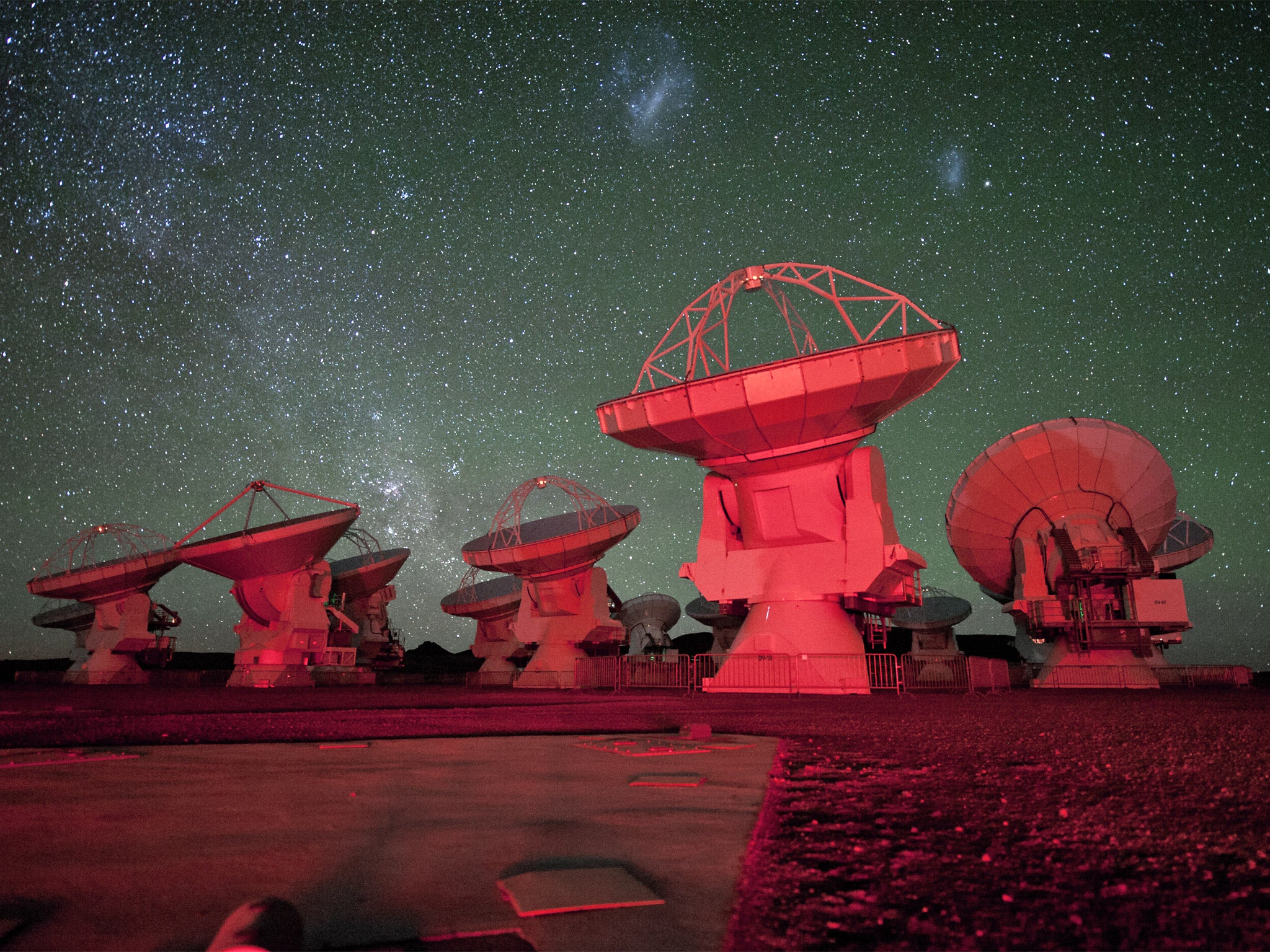Space radio waves align in mysterious mathematical pattern, could be produced by alien technology
Telescopes have been seeing unexplained energy bursts for more than a decade, and are starting to learn more about where they come from

Your support helps us to tell the story
From reproductive rights to climate change to Big Tech, The Independent is on the ground when the story is developing. Whether it's investigating the financials of Elon Musk's pro-Trump PAC or producing our latest documentary, 'The A Word', which shines a light on the American women fighting for reproductive rights, we know how important it is to parse out the facts from the messaging.
At such a critical moment in US history, we need reporters on the ground. Your donation allows us to keep sending journalists to speak to both sides of the story.
The Independent is trusted by Americans across the entire political spectrum. And unlike many other quality news outlets, we choose not to lock Americans out of our reporting and analysis with paywalls. We believe quality journalism should be available to everyone, paid for by those who can afford it.
Your support makes all the difference.Mysterious bursts of energy coming from space align in a mathematical pattern, and so could be emanating from alien technology, according to scientists.
Blitzars, which last only about a millisecond, have been detected by telescopes since about 2001 and have been heard ten times since. And nobody really knows where they come from, or why they happen.
But a new study has found that the bursts line up in a way that is not explained by existing physics, reports the New Scientist.
Scientists tried to work out how far the bursts have travelled through space to get to us, using “dispersion measures”. That looks at how the radiowaves that are being sent get scattered as they travel through space — the higher the dispersion measure, the further that radiowaves seem to have been sent before they arrived.
All of the ten bursts that have been detected so far have dispersion measures that line up as multiples of a single number: 187.5. The chances of them doing so are 5 in 10,000, the scientists behind the study claim.
John Learned, from the University of Hawaii in Manoa, led the study with Michael Hippke from the Institute for Data Analysis in Neukirchen-Vluyn, Germany. Learned said that the line-up was “very, very hard to explain”.
There are two theories for why the coincidence is happening, according to the researchers. The first proposes that each of the bursts were sent from regularly spaced intervals: five sources, at equally spaced distances from the Earth. But the more likely one says that they probably came from somewhere much closer, like in the Milky Way, but are being mysteriously sent with a delay that matches up to the strange pattern.
There is little reason for the bursts to line up in this way if they are being sent by natural bodies, the scientists said. Some stars have sent out bursts of radio waves, but without the power or regular pattern that has been found in the fast radio bursts. However, it may be that there is some astrophysics that scientists are yet to understand that has been driving the timing.
It could also be that the signals are not coming from space at all, but form much closer. The messages could be coming from a secret satellite that is hiding its messages so that they appear to come from much deeper in space.
But the scientists conclude that if none of the other explanations work out, “An artificial source (human or non-human) must be considered”.
While scientists have long considered that the bursts could be messages from aliens, the new finding could lend extra credence to that theory. Researchers have been attempting to work out whether a message is encoded in the bursts — and it seems they might now have found one.
Join our commenting forum
Join thought-provoking conversations, follow other Independent readers and see their replies
Comments